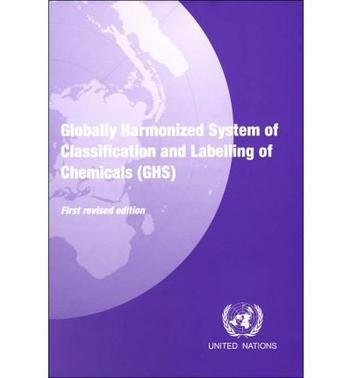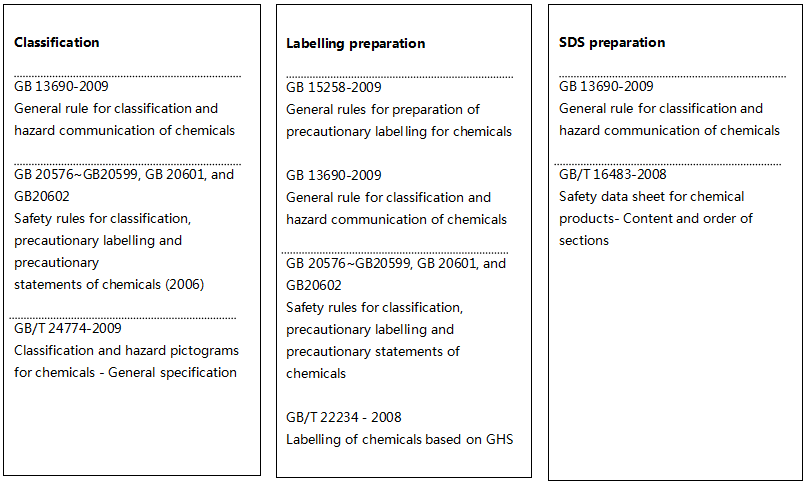-
Globally Harmonized System of Classification and Labelling of Chemicals (GHS, or "Purple Book") is regulatory document published by United Nations to guide countries to control chemical hazards and protect human health and the environment. With a global harmonized standard in chemical hazard classification and labelling, it can enhance the protection of human health and environment, reduce the duplication of chemical test and assessment, and facilitate international chemical trade.
-
GHS book published by United Nations
Globally Harmonized System of Classification and Labelling of Chemicals (GHS) is regulatory document published by United Nations to guide countries to control chemical hazards and protect human health and the environment. It is also called “Purple Book” due to its purple cover. With its guidance, each country can take “building block” approach to implement specific GHS standard of chemical classification and category that suits its own circumstance.
The first edition of GHS was adopted at the first meeting of United Nations Committee of Experts on the Transport of Dangerous Goods and on the Globally Harmonized System of Classification and Labelling of Chemicals (UNCETDG/GHS) in Dec 2002, and published by United Nations in July 2003.
-
Content of United Nations GHS documents
-
Part 1 Introduction to the GHS
Part 2 Physical Hazards
Part 3 Health Hazards
Part 4 Environment Hazards
Annexes Allocation of labelling elements, Classification and labelling, and etc.

-
-
Update of GHS documents
United Nations Committee of Experts on the Transport of Dangerous Goods and on the Globally Harmonized System of Classification and labelling of Chemicals (UNCETDG/GHS) released one edition of GHS every two years, based on discussion in two meetings every year. Until 2011, United Nations has revised 4 times on GHS documents.
-
GHS related standards
China GHS National Standards (GB)

-
Our services
●GHS-SDS and Labelling preparation
○GHS-SDS and Labelling preparation and update compliant to China legislation●Hazardous Chemicals Registration
○Preparation of documents for registration, and documents submission through internet
○Communication with Authority, helping clients successfully obtain registration certificate●24 Hours Emergency Call Service
○International service for NRCC 24 hours emergency call
○CNCIC 24 hours emergency call service●Chemical Hazard Identification, Classification and Risk Assessment
○Chemicals classification by searching and inquiring in authoritative database
○Hazard identification test arrangement for chemicals without relevant data
○Chemicals risk assessment for exposure within China according to Guidelines for Risk Assessment of Chemicals●Regulatory Consulting for China Hazardous Chemicals
-
Industrial Chemical, Agricultural Chemical, and Daily chemical, including substance, solution, and mixture) The following items are not within the scope:
1.Chemical waste
2.Tobacco and its products
3.Food, medicine, and cosmetics
4.Chemical articles (which is produced in specific shape or design, and doesn’t release hazardous substance in normal use)
5.Intermediate products in reacting container or in reaction during production process. Classification and labelling of pesticides, veterinary drugs, food additives and feed additives, should be supervised by other laws, regulations or standards which cover provisions of them. However, the raw materials and intermediates of the above items are still supervised by GHS system.1.Harmonized standard for chemicals classification according to physical hazard, health hazard, and environmental hazard of chemicals.
2.Harmonized chemicals hazard communication elements, including specification of labelling and SDS.
Industry should be the one who implements GHS. Manufacturers and suppliers should provide GHS labelling to downstream, as well as SDS.







